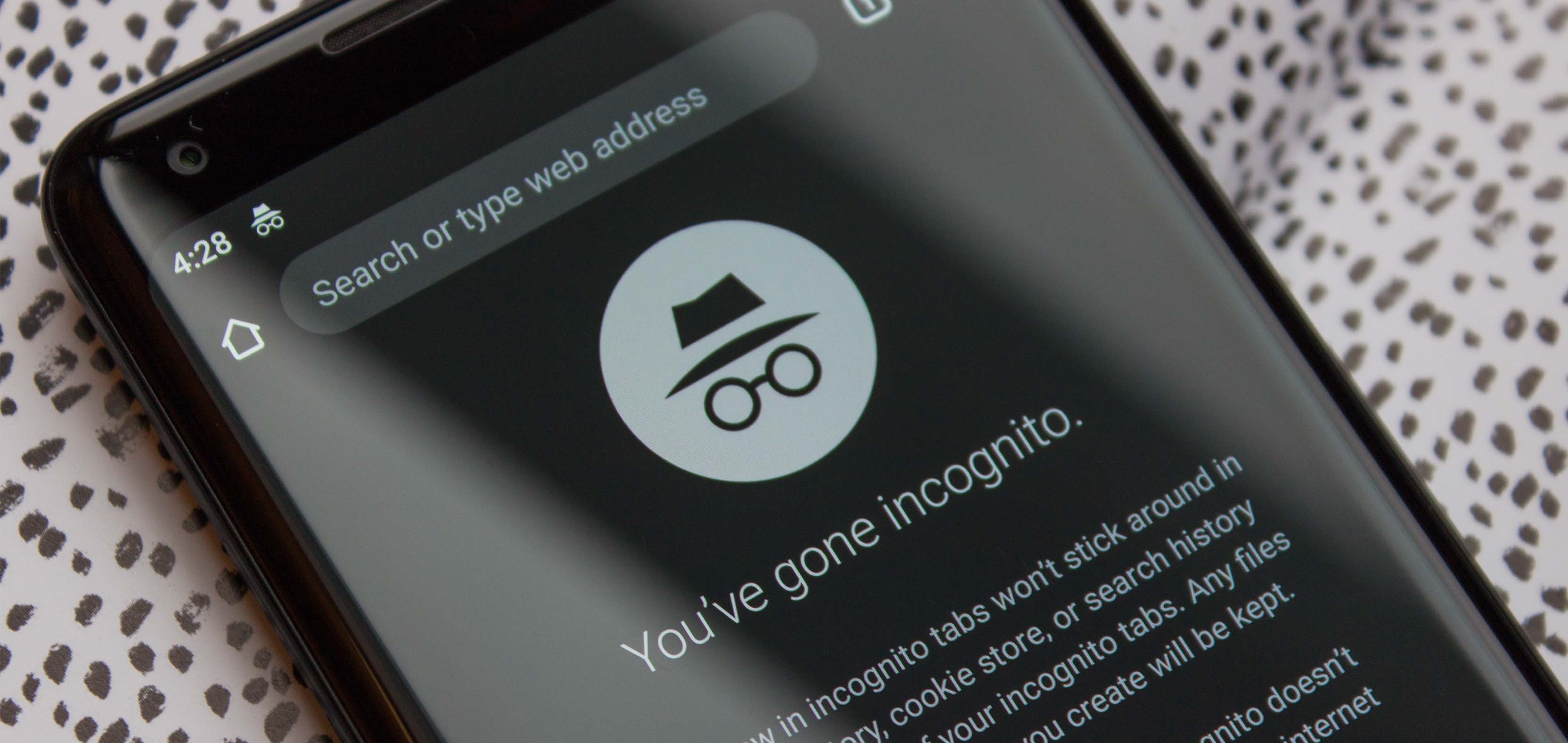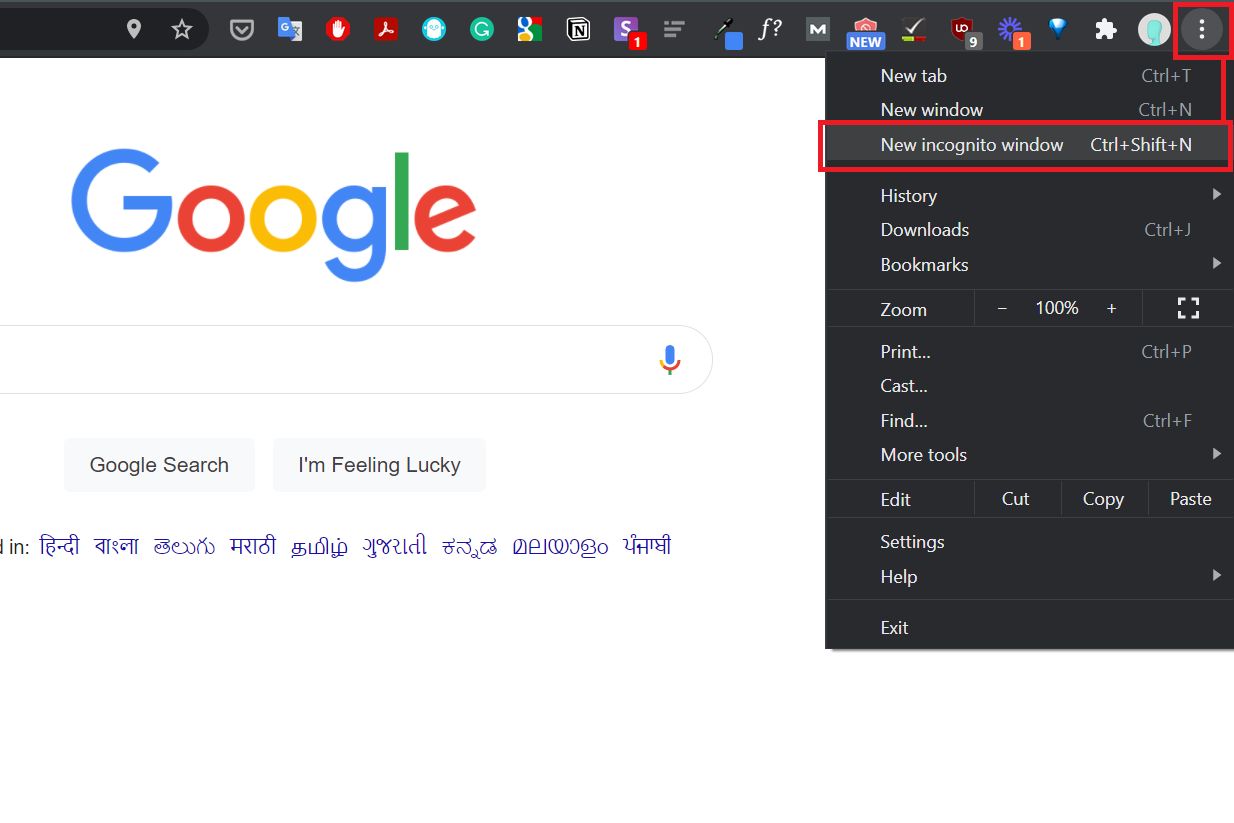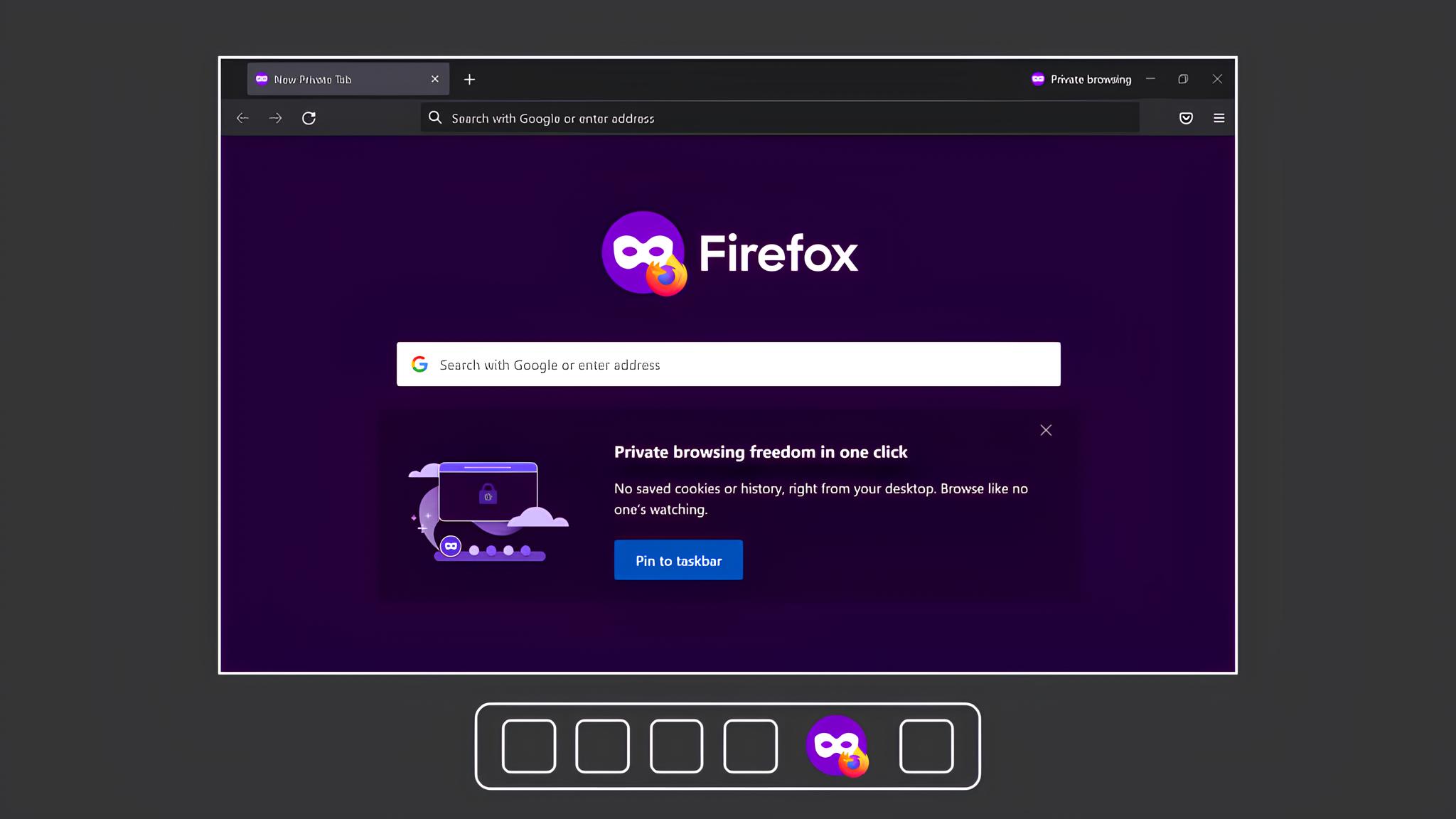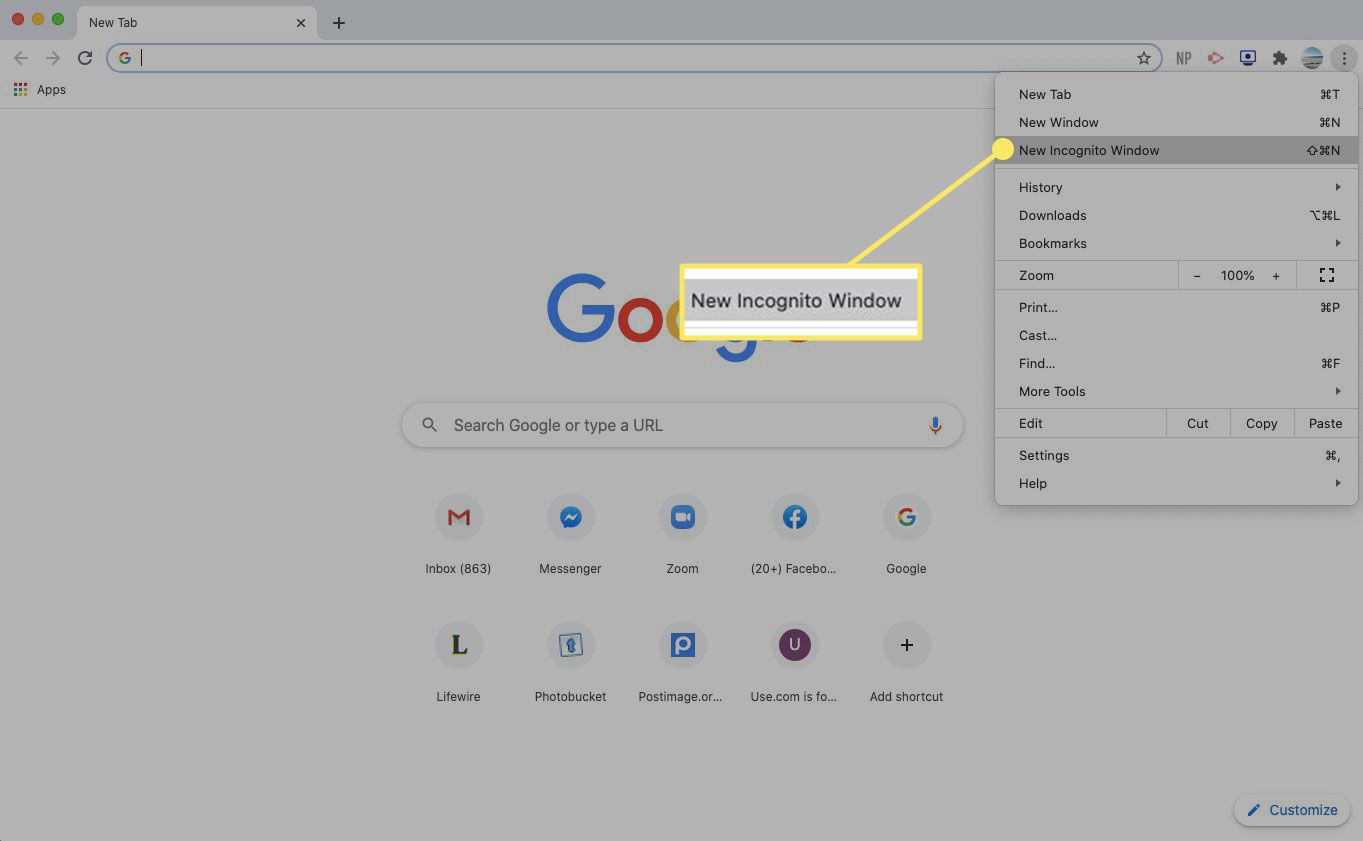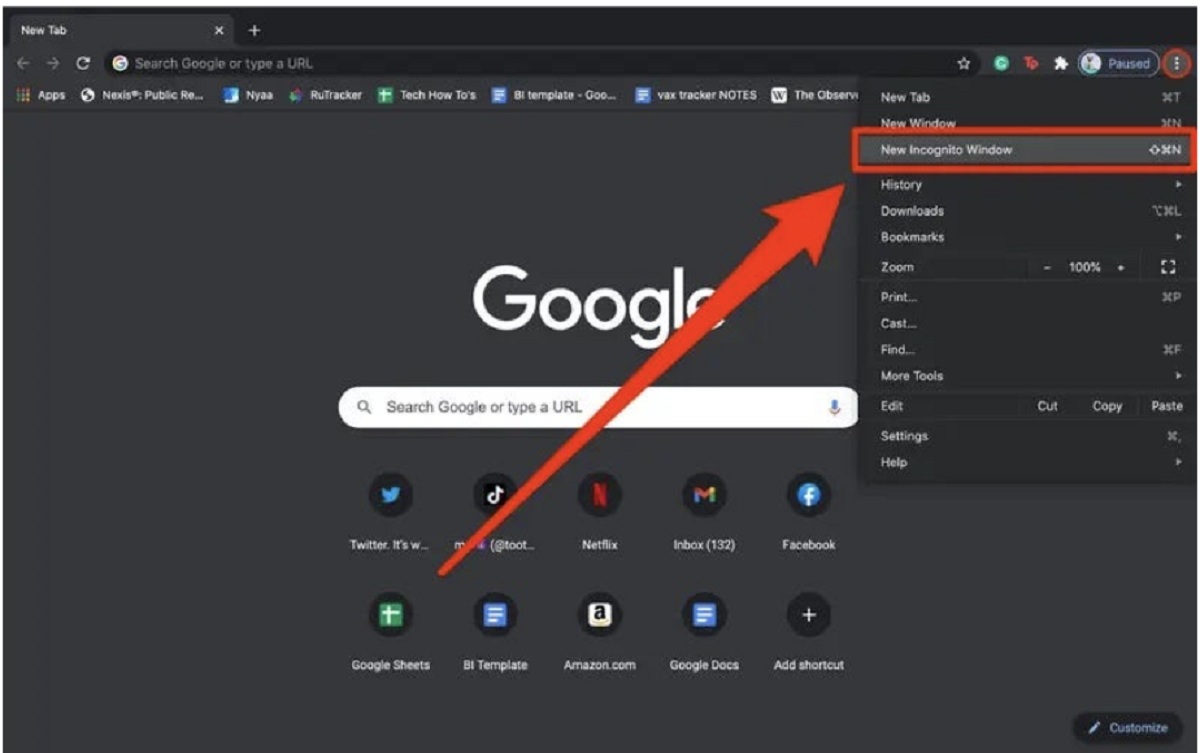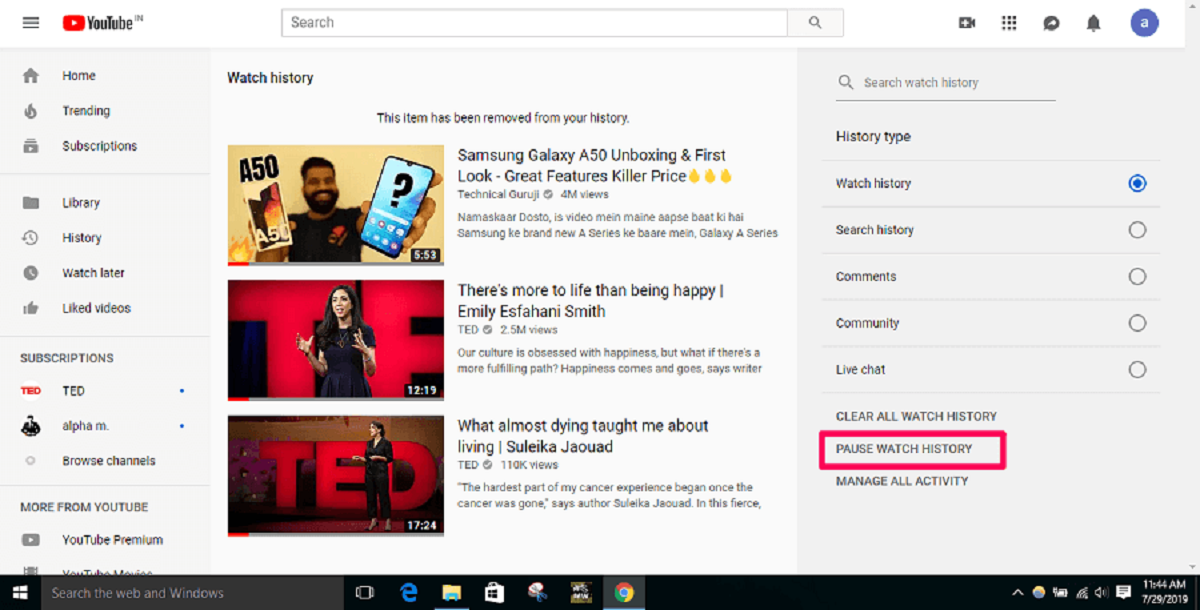Introduction
Welcome to the world of online privacy! In this digital age, where our lives are increasingly intertwined with the internet, it’s crucial to protect our personal information from prying eyes. One popular tool that many internet users rely on is the incognito mode, available in most web browsers. But what exactly does incognito mode mean, and how does it work?
Incognito mode, also known as private browsing or privacy mode, is a feature that allows users to browse the internet without leaving traces of their online activities on their devices. When enabled, this mode prevents the browser from storing the history, cookies, and temporary files that are typically created while browsing the web. It also disables tracking mechanisms such as third-party cookies and browser extensions, providing a more private online experience.
The purpose of incognito mode is to offer users a certain level of privacy and anonymity while accessing websites. It’s particularly useful when you want to browse the web without any information being saved on your device, especially if you’re using a shared computer or network. However, it’s important to understand that incognito mode is not a foolproof method to achieve complete privacy online, as we’ll explore later on in this article.
In the next sections, we will delve deeper into the features, benefits, and limitations of incognito mode. We’ll also shed light on some misconceptions surrounding its usage and explore alternative privacy tools and settings that can further enhance your online privacy. So, let’s dive in and uncover the secrets of incognito mode!
Definition of Incognito Mode
Incognito mode, sometimes referred to as private browsing or privacy mode, is a feature available in most modern web browsers that allows users to browse the internet without leaving a trace of their online activities on their device. When activated, this mode creates a separate browsing session within the browser, separate from the regular browsing session.
While using incognito mode, the browser does not store the browsing history, cookies, or temporary files that are typically generated while browsing the web. This means that any websites visited or searches performed in incognito mode will not be visible in the browsing history. Additionally, any cookies that are downloaded during an incognito session are deleted as soon as the session is closed.
The primary purpose of incognito mode is to provide users with a level of privacy and anonymity during their online activities. This can be particularly useful in certain scenarios, such as when using a shared device or public computer, where you may not want your browsing history and login credentials to be stored.
It’s important to note that while incognito mode prevents the browser from storing local data, it does not make you completely anonymous online. Your internet service provider (ISP), as well as the websites you visit, can still track your activities. Incognito mode only provides privacy on the device you are using, not across the entire internet.
Furthermore, it’s essential to understand that incognito mode does not protect against other forms of tracking, such as tracking by advertisers or malicious websites. While it can help prevent websites from remembering your login information or displaying personalized ads based on your browsing history, it does not block tracking technologies like pixel tags or browser fingerprinting.
In the next sections, we will explore the benefits of using incognito mode, how to activate it in popular web browsers, and the myths surrounding its usage. Stay tuned to discover more about this fascinating feature and how it can enhance your online privacy!
Benefits of Incognito Mode
Incognito mode offers several benefits to users who are concerned about their online privacy. While it may not provide complete anonymity, it can still be a valuable tool in certain situations. Let’s explore some of the key advantages of using incognito mode:
- Browsing without leaving a trace: When you activate incognito mode, the browser does not store any browsing history, cookies, or temporary files. This means that after you close the incognito window, there will be no sign of the websites you visited or the searches you performed. It can be particularly helpful if you are using a shared computer and want to ensure your browsing activities remain private.
- Avoiding personalized ads: Incognito mode can help prevent websites from tracking your browsing history and showing you personalized ads based on your interests. Since the browser does not store cookies or other tracking data, the websites you visit are not able to gather information about your online behavior. This can be a useful feature if you want to reduce the amount of targeted advertising you receive.
- Protecting login information: Incognito mode can be helpful when accessing websites that require you to log in. Since the browser does not save cookies or remember login credentials, you can ensure that your username and password are not stored on the device you are using. This can provide an additional layer of security, especially when using public computers or networks.
- Testing website changes: Incognito mode can be a valuable tool for web developers and designers. By using incognito mode, they can test website changes without interference from cached data or stored cookies. It allows them to view the website as a new user would, providing a fresh perspective and ensuring that any recent updates or modifications are accurately reflected.
- Preserving privacy in online transactions: When making online purchases or conducting sensitive transactions, incognito mode can be beneficial. It prevents the browser from storing credit card information or other sensitive data that may be entered during the transaction. While it’s still essential to verify the security of the website and use reliable payment gateways, incognito mode offers an added layer of protection against potential data breaches.
While incognito mode provides these advantages, it’s important to remember that its effectiveness is limited. In the next section, we will discuss the process of activating incognito mode in popular web browsers and distinguish between the myths and reality surrounding its usage.
How to Activate Incognito Mode
Activating incognito mode is a simple process that can be done in most popular web browsers. The following steps outline how to enable incognito mode in some of the commonly used browsers:
- Google Chrome: To activate incognito mode in Google Chrome, click on the three-dot menu icon in the top-right corner of the browser window. From the dropdown menu, select “New incognito window.” Alternatively, you can use the keyboard shortcut Ctrl+Shift+N.
- Mozilla Firefox: In Firefox, you can activate incognito mode by clicking the three-bar menu icon in the top-right corner. From the dropdown menu, select “New Private Window.” You can also use the keyboard shortcut Ctrl+Shift+P.
- Apple Safari: To initiate private browsing in Safari, click on the “File” menu and select “New Private Window.” Alternatively, you can use the keyboard shortcut Shift+Command+N.
- Microsoft Edge: In Microsoft Edge, click on the three-dot menu icon in the top-right corner of the browser window. From the dropdown menu, choose “New InPrivate Window.” The keyboard shortcut for activating InPrivate browsing is Ctrl+Shift+P.
- Opera: To enable incognito mode in Opera, click on the Opera logo in the top-left corner and select “New private window.” Alternatively, you can use the keyboard shortcut Ctrl+Shift+N.
Once you have activated incognito mode, a new browser window will open with a distinctive appearance, indicating that you are browsing privately. You can now use this window to browse the internet without leaving any traces on your device.
It’s important to note that while incognito mode prevents the browser from storing your browsing history and cookies, it does not make you completely anonymous. Your internet service provider (ISP), as well as the websites you visit, can still track your activities. Additionally, if you download files or bookmarks while in incognito mode, those will still be saved on your device.
Now that you know how to activate incognito mode in various browsers, let’s debunk some common myths and misconceptions about what really happens in incognito mode in the next section.
What Happens in Incognito Mode: Myths vs. Reality
Incognito mode has gained some misconceptions over time regarding its actual capabilities and limitations. Let’s demystify some of the common myths surrounding incognito mode and understand the reality behind them:
- Myth: Incognito mode makes you completely anonymous online. Reality: While incognito mode prevents the browser from storing your browsing history, cookies, and other temporary data, it does not make you anonymous. Websites can still track your IP address and gather certain information about your online activities. To achieve a higher level of anonymity, you would need to use additional privacy tools such as virtual private networks (VPNs) or the Tor network.
- Myth: Incognito mode protects you from viruses and malware. Reality: Incognito mode does not provide any additional protection against viruses and malware. Its primary purpose is to prevent browsing history and data from being saved on the device. To safeguard against malware, it’s important to use reliable antivirus software and exercise caution when visiting unfamiliar websites or downloading files.
- Myth: Incognito mode makes you invisible to websites. Reality: Incognito mode does not make you invisible to websites you visit. While it prevents the browser from storing cookies and tracking data, websites can still see that you have visited their site and gather certain information about your actions. They can also track your IP address and use other means to analyze your behavior.
- Myth: All browsing activity is hidden in incognito mode. Reality: While incognito mode prevents your browsing history and data from being saved on your device, it does not hide your activities from your internet service provider (ISP) or employers. They can still monitor and track your online activities. Incognito mode only affects data stored locally on your device.
- Myth: Websites cannot detect ad blockers in incognito mode. Reality: Incognito mode does not affect the functionality of browser extensions, including ad blockers. Websites can still detect and block access if they identify ad blockers being used, whether you are in incognito mode or not.
It’s important to have a clear understanding of what incognito mode can and cannot do. While it provides certain privacy benefits, it’s not a comprehensive solution for online anonymity or security. Being aware of its limitations can help you make informed decisions about when and how to use incognito mode, and explore other privacy-enhancing tools and settings if necessary.
In the next section, we will explore the limitations and considerations of incognito mode, allowing you to make informed choices about your online privacy.
Does Incognito Mode Make You Completely Anonymous?
One of the common misconceptions about incognito mode is that it provides complete anonymity online. However, it’s important to understand that incognito mode does not make you completely anonymous. While it offers certain privacy benefits, there are still factors to consider that may affect your anonymity. Let’s explore these limitations:
IP Address & Online Tracking: Incognito mode does not hide your IP address, which is a unique identifier assigned to your device by your internet service provider (ISP). Websites can still track your IP address and gather information about your online activities, including the pages you visit and the links you click. They can also use other identification methods, such as browser fingerprinting, to track your online behavior and link it to your device.
ISP and Network Monitoring: Incognito mode does not prevent your ISP or network administrator from monitoring your online activities. They can still see the websites you visit and the data you transmit over the network. If you’re using a public Wi-Fi network, it’s important to exercise caution as your data may be intercepted by malicious actors.
Website Tracking and Analytics: Even in incognito mode, websites can still collect data about your actions on their site. They can use cookies, pixel tags, and other tracking mechanisms to gather information for analytics purposes or to provide personalized content. Incognito mode mainly prevents the browser from storing this data locally on your device, but it does not stop websites from gathering it.
Third-Party Tracking and Advertisements: Incognito mode can help reduce the impact of targeted advertising by preventing websites from using stored cookies to serve personalized ads. However, it does not block all tracking technologies employed by advertisers. Advertisers can still use other methods, such as browser fingerprinting or tracking pixels, to gather information about your browsing habits and target you with relevant advertisements.
Device and Account Security: It’s important to note that incognito mode does not provide device or account security. It does not protect against malware, phishing attacks, or data breaches. To ensure a secure online experience, it’s essential to use reliable antivirus software, keep your devices and applications updated, and practice good security hygiene, such as using strong and unique passwords for your accounts.
While incognito mode has its limitations, it can still provide a helpful layer of privacy when browsing the web. However, if you require greater anonymity, additional measures such as using a virtual private network (VPN) or the Tor network may be necessary. Understanding the extent of incognito mode’s capabilities can help you make informed decisions about your online privacy.
In the next section, we will explore some alternative privacy tools and settings that can supplement the use of incognito mode and further enhance your online privacy.
Limitations and Considerations of Incognito Mode
While incognito mode offers certain privacy benefits, it’s important to be aware of its limitations and consider other factors that may impact your online privacy. Here are some key limitations and considerations to keep in mind when using incognito mode:
Local Privacy: Incognito mode primarily provides privacy on the local device by not storing browsing history, cookies, or temporary files. However, it does not prevent your internet service provider (ISP), employers, or websites from tracking your online activities through other means. If you’re looking for comprehensive anonymity, you may need to consider additional privacy tools, such as using a virtual private network (VPN) or the Tor network.
Website Tracking: Incognito mode does not prevent websites from tracking your activities during the current session. While it may not save your browsing history or cookies, websites can still track your behavior through other means, such as browser fingerprinting or tracking pixels. If you want to minimize website tracking, consider using browser extensions that block trackers or enable enhanced privacy settings within your browser.
Downloads and Bookmarks: It’s important to note that incognito mode does not prevent files you download or bookmarks you save from being stored on your device. If you want to keep your downloads and bookmarks private, be sure to manually delete them or use a separate tool for managing your downloads and bookmarks.
Sharing Devices: While incognito mode can help protect your browsing privacy on shared devices, it’s important to remember that it does not secure your personal information from other users of the device. If you’re using a public computer or a device shared with others, take additional precautions to ensure your sensitive information remains secure.
Extensions and Plugins: Incognito mode disables some browser extensions and plugins by default to enhance privacy. However, certain extensions may still collect and store data, even in incognito mode. It’s important to review and configure the settings of your browser extensions to ensure they align with your privacy preferences.
Data Syncing: If you have data syncing enabled in your browser settings, incognito mode may not prevent your browsing activities from being synced across devices. It’s crucial to review and adjust your browser’s syncing settings to ensure your incognito browsing remains separate from your regular browsing sessions.
Understanding the limitations and considerations of incognito mode can help you make informed decisions about your online privacy. While it can provide a level of privacy and prevent your local browsing activities from being stored, it’s important to supplement it with additional privacy tools, settings, and security practices to optimize your online privacy and security.
In the next section, we will explore some alternative privacy tools and settings that you can consider alongside or instead of incognito mode to enhance your online privacy.
Alternative Privacy Tools and Settings
While incognito mode provides a certain level of privacy, there are alternative privacy tools and settings that can enhance your online privacy even further. Consider incorporating the following tools and practices into your online routine:
Virtual Private Networks (VPNs): A VPN creates a secure encrypted connection between your device and the internet, making it difficult for anyone to intercept your data. It masks your IP address and encrypts your internet traffic, providing a higher level of privacy and security. VPNs can be especially useful when using public Wi-Fi networks or when you want to access geo-restricted content.
Privacy-Focused Browsers: Consider using privacy-oriented web browsers, such as Mozilla Firefox or Brave, which emphasize user privacy and offer features like built-in ad blockers and improved tracking protection. These browsers often have additional privacy settings and customizable options to enhance your online privacy.
Browser Extensions: Install browser extensions that block trackers, prevent third-party cookies, and offer additional privacy protection. Popular examples include Privacy Badger, uBlock Origin, and HTTPS Everywhere. These extensions can help minimize the collection of your browsing data and enhance your overall privacy online.
Privacy-Focused Search Engines: Instead of relying solely on mainstream search engines, consider using privacy-focused search engines such as DuckDuckGo or Startpage. These search engines prioritize user privacy by not storing any personal information and not tracking your searches.
Privacy Settings and Configuration: Take the time to review and configure the privacy settings of your web browser, operating system, and online accounts. Adjust settings related to data collection, tracking, and personalized ads to align with your privacy preferences. Regularly clear your browsing data, including cookies, cache, and saved passwords.
Two-Factor Authentication (2FA): Enable two-factor authentication whenever possible to add an extra layer of security to your online accounts. This helps protect your accounts from unauthorized access, even if your passwords are compromised.
Secure Password Management: Use a reliable password manager to generate and store unique, strong passwords for each online account. This reduces the risk of password reuse and simplifies the process of managing multiple complex passwords.
Educate Yourself: Stay informed about privacy issues, best practices, and emerging privacy-enhancing technologies. The more you learn about online privacy, the better equipped you’ll be to protect your personal information and make informed decisions about your online activities.
By incorporating alternative privacy tools and settings into your online routine, you can enhance your online privacy and security. Remember that no single tool or technique can provide complete anonymity, and it’s important to maintain good online hygiene and remain vigilant while browsing the internet.
In the final section, we will wrap up our exploration of incognito mode and highlight key takeaways to remember regarding online privacy.
Conclusion
As we conclude our exploration of incognito mode and online privacy, it’s crucial to recognize that while incognito mode offers certain privacy benefits, it does not provide complete anonymity or foolproof protection. It prevents the browser from storing your browsing history, cookies, and temporary files, but it does not hide your activities from your internet service provider (ISP) or websites you visit. It’s important to understand the limitations and consider additional privacy tools and practices to enhance your online privacy.
Alternative privacy tools like virtual private networks (VPNs), privacy-focused browsers, browser extensions that block trackers, and privacy-oriented search engines can broaden your privacy arsenal and offer a higher level of protection against data collection and online tracking. Additionally, configuring privacy settings, using two-factor authentication (2FA), and maintaining good online hygiene through secure passwords and regular data clearing are essential habits to adopt.
Ultimately, managing your online privacy requires a combination of awareness, informed decision-making, and proactive measures. Consider your individual privacy needs and tailor your approach accordingly. Stay up to date with privacy-related news and evolving technologies to ensure you are equipped with the knowledge to protect your personal information.
Remember, incognito mode is just one tool in your privacy toolkit. By understanding its limitations and using it in conjunction with other privacy tools and practices, you can maximize your online privacy and enjoy a more secure browsing experience.







